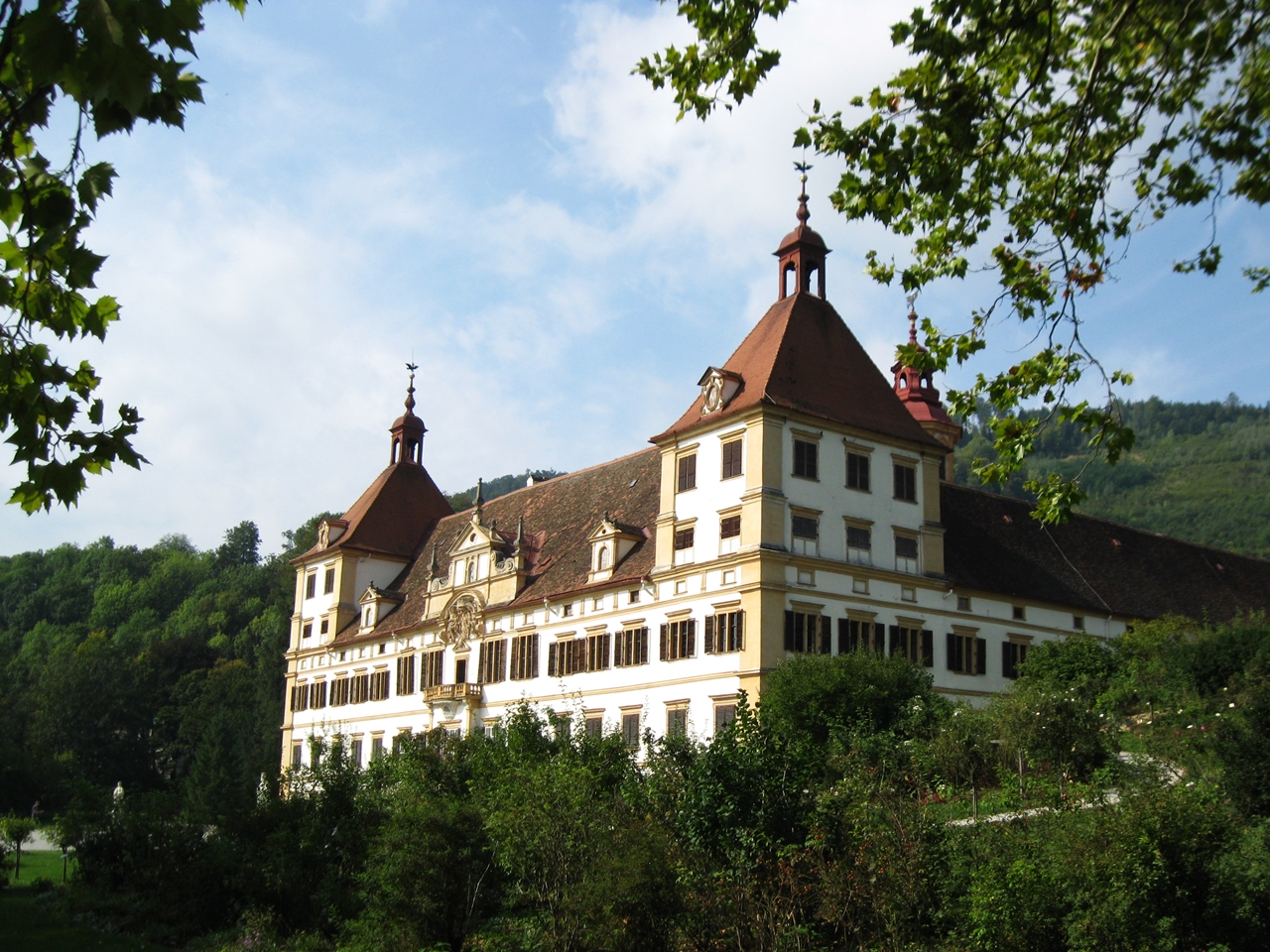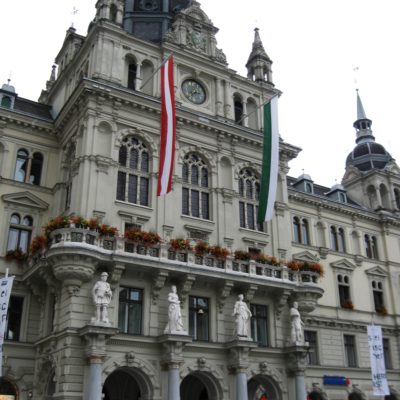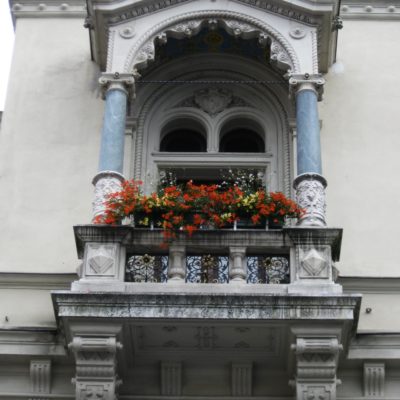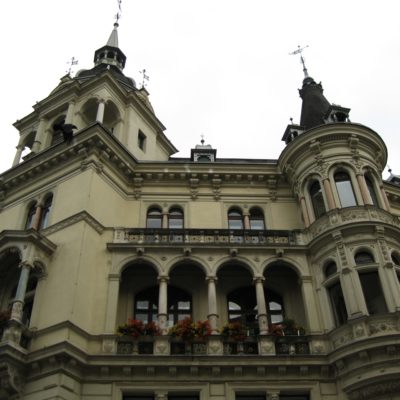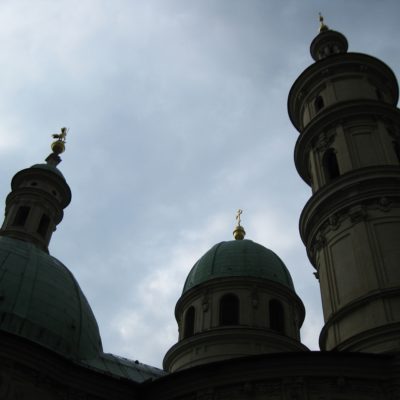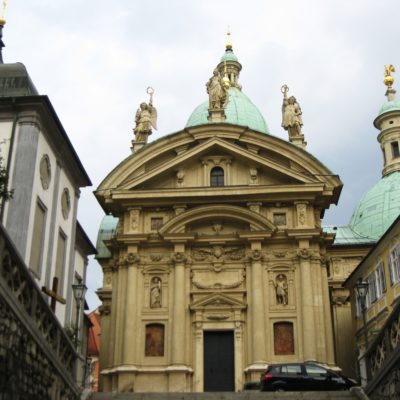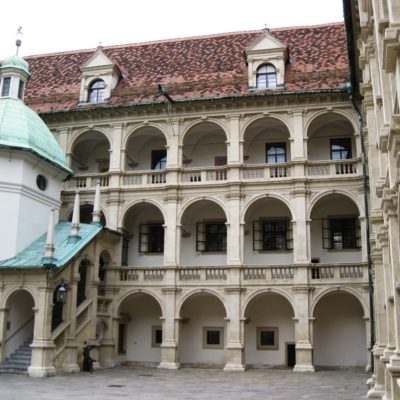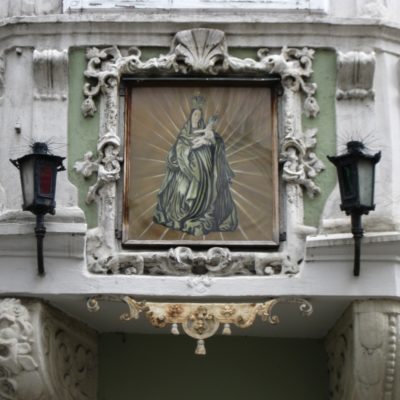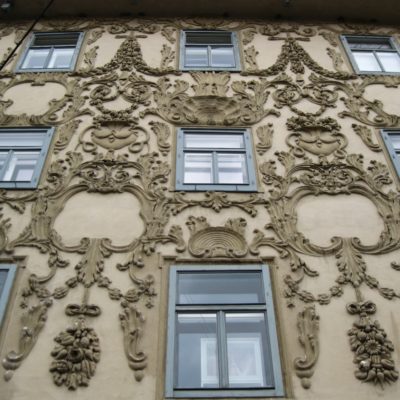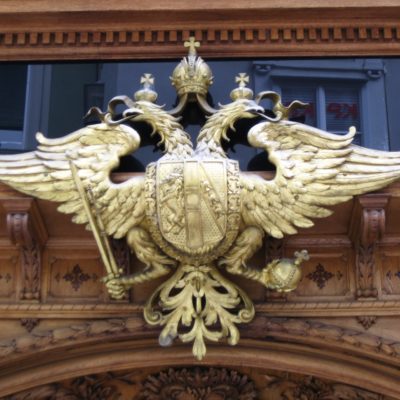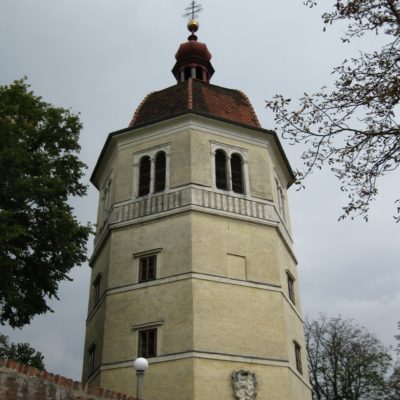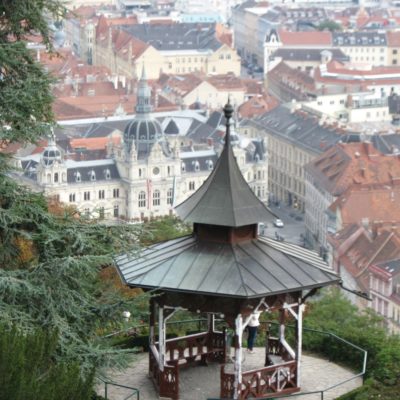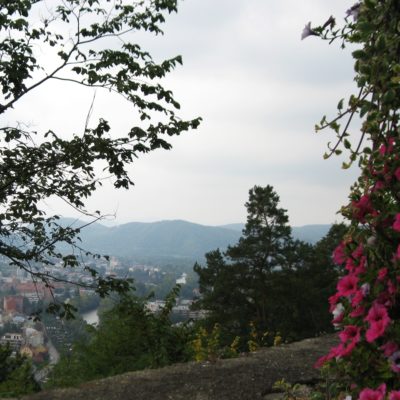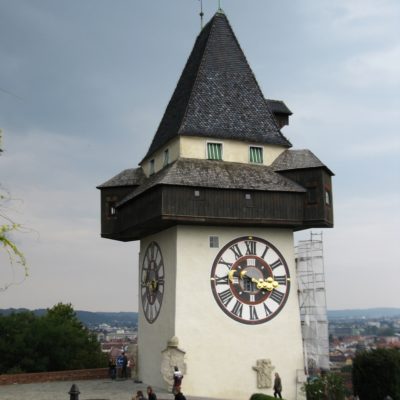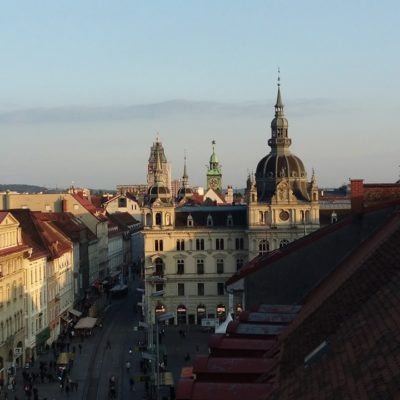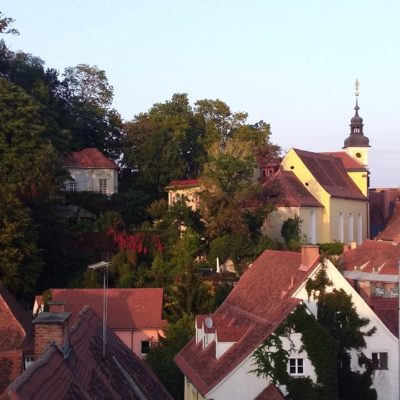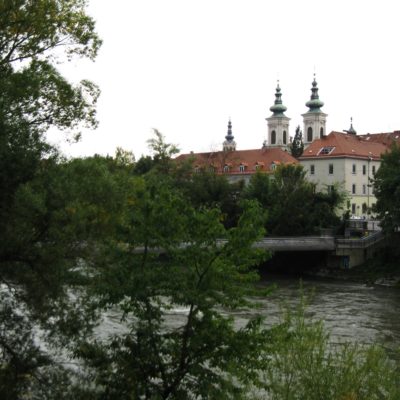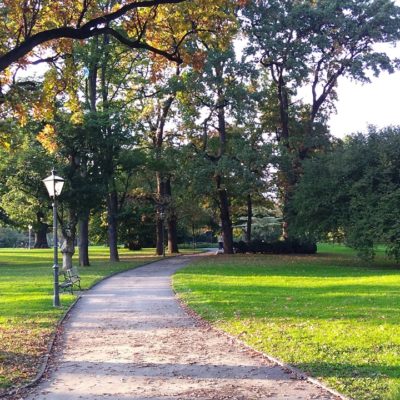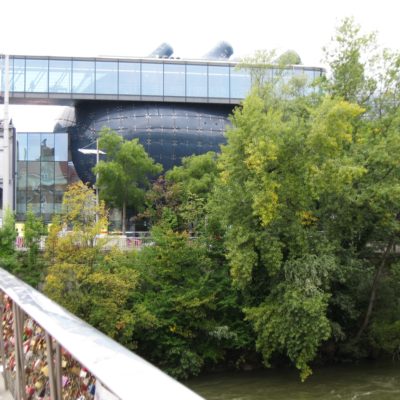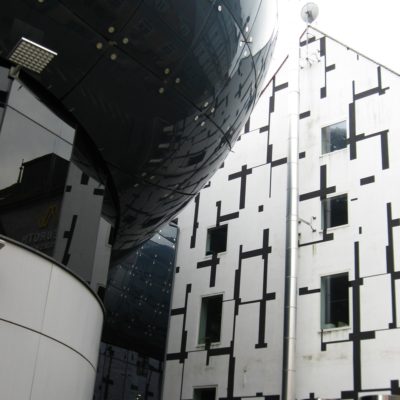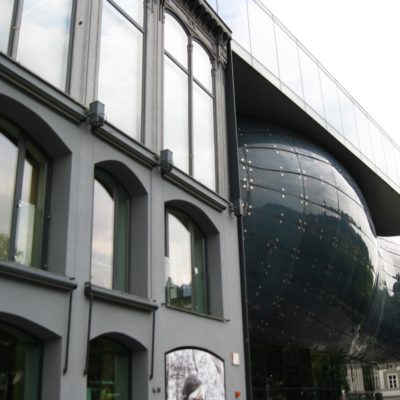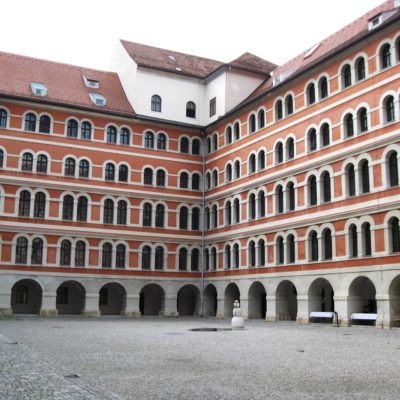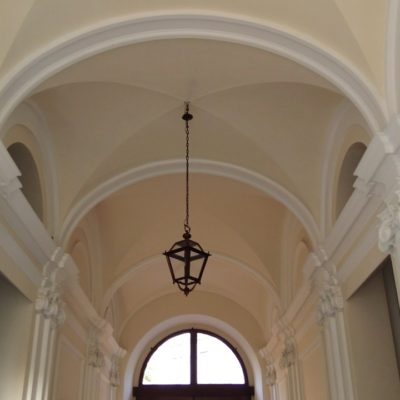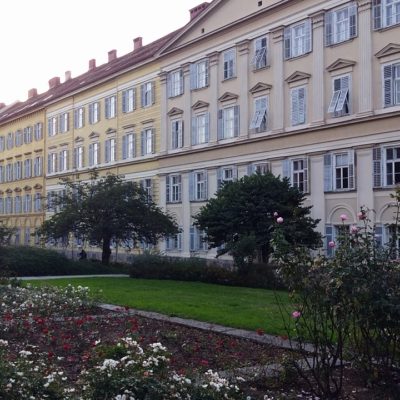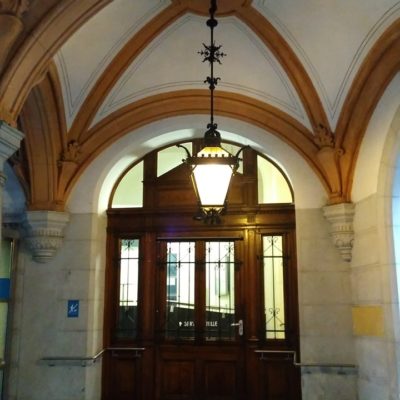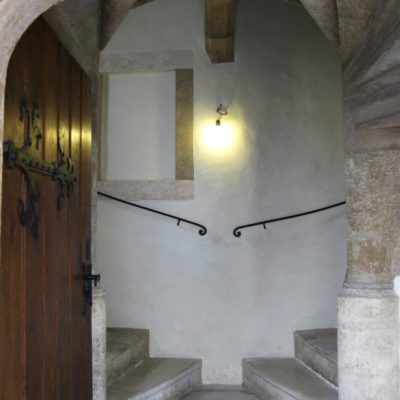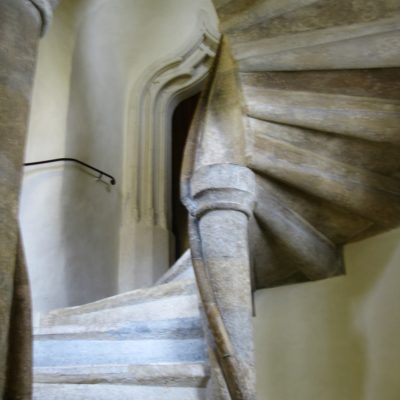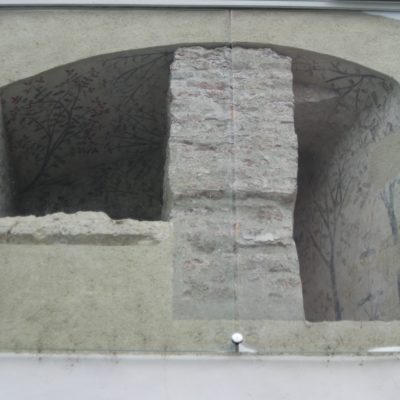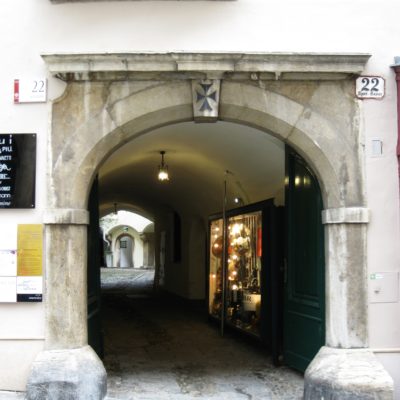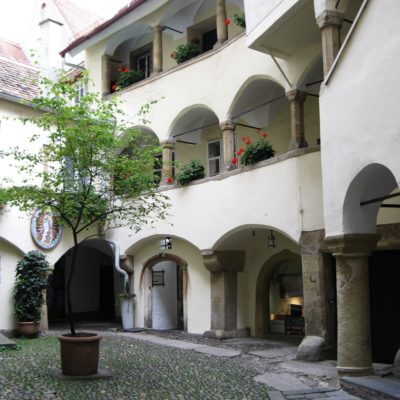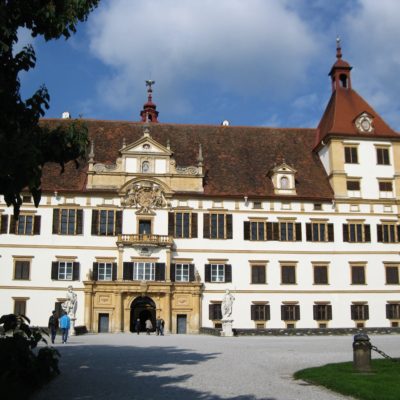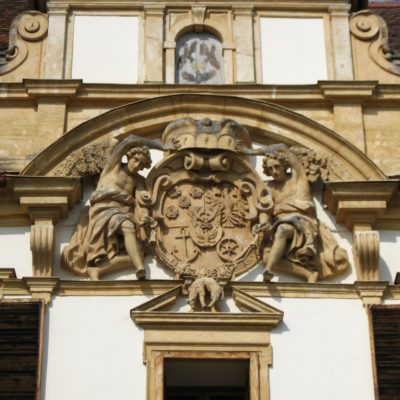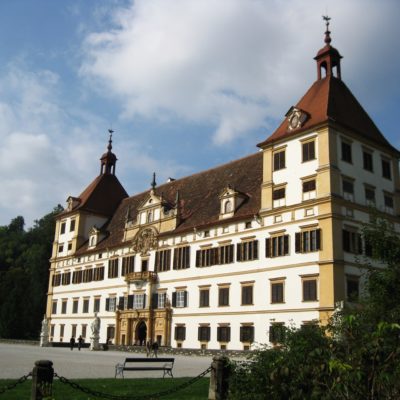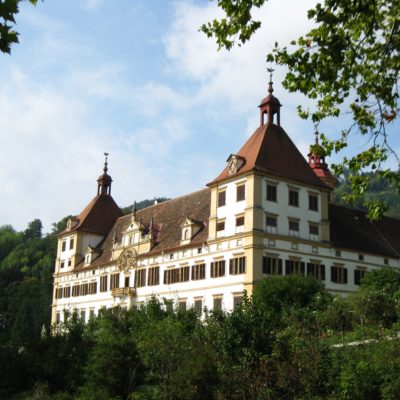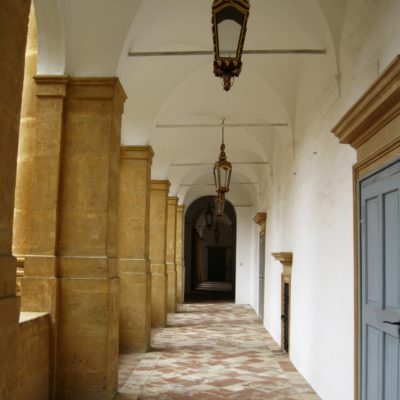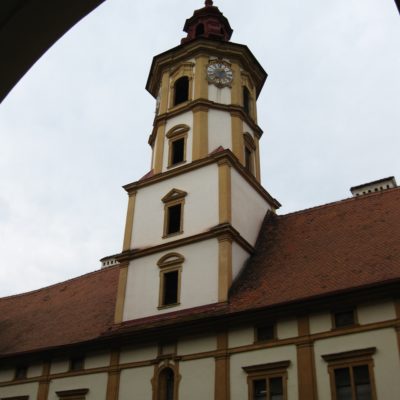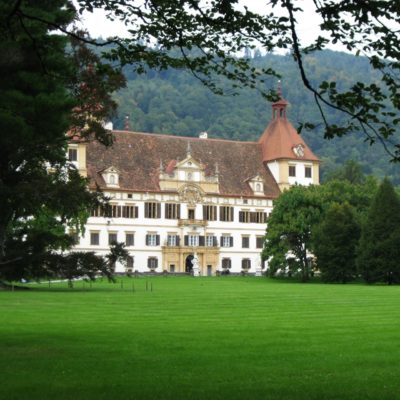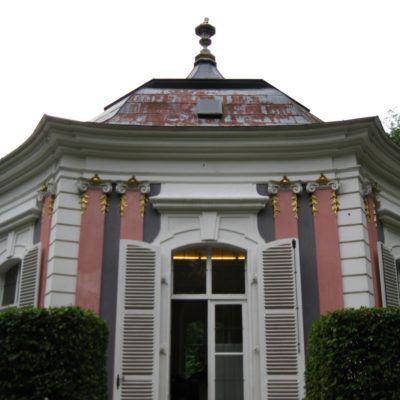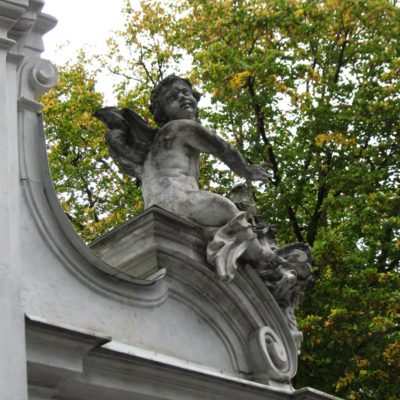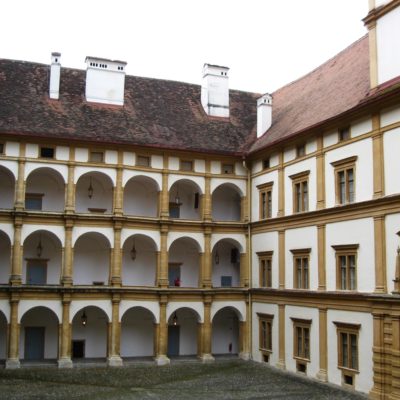The UNESCO World Heritage site in Graz has two components: The historic city centre and Schloss Eggenberg, which is located within the city, but a little further out. Apart from World Heritage status, Graz has another major claim to fame, as it has been a UNESCO City of Design since 2011, being part of the Creative Cities Network. On top of those UNESCO accolades, Graz is not only capital of Styria, but also Austria’s second biggest city, behind Vienna. I’d say those are reasons enough to visit!
I was in the lucky position to spend a whole week in Graz in September 2017, as I had been granted EU-funding to participate in a staff mobility scheme to visit a partner university. Naturally, I also made time to discover the city and the World Heritage here.
“The City of Graz – Historic Centre and Schloss Eggenberg reflects artistic and architectural movements originating from the Germanic region, the Balkans and the Mediterranean, for which it served as a crossroads for centuries. The greatest architects and artists of these different regions expressed themselves forcefully here and thus created a brilliant syntheses.”
(from the UNESCO website)
- Graz – Town Hall
- Graz – Town Hall
- Graz – Town Hall
- Graz – Ferdinand II Tomb
- Graz – Ferdinand II Tomb
Discovering the historic centre is quite easy, as everything is in easy walking distance. The tourist office has several maps on offer for free, which depict different walking routes through the centre, and they are all excellent. Graz really is a charming city – walking through the lanes and courts with their buildings from different eras, you can’t help feeling transported back in time.
- Graz – Landhaus Courtyard
- Graz – House Detail
- Graz – Luegg House Facade
- Graz – Hofbäckerei Edegger Detail
Another big plus are the many cafes, restaurants and pubs to revive you from your excursions through town; not to mention the friendly locals. To top it all off, there is also a funicular right in the middle of the city (the Schlossberglift), to take you up to the Schlossberg. Views from the Schlossberg are quite amazing, though I wasn’t very lucky with regards to the weather when I went up. (You also have splendid views over Graz from the restaurant on the roof of Kastner & Öhler department store.) I also really liked the many parks and gardens.
- Graz – Bell Tower
- Graz – View from Schlossberg
- Graz – View from Schlossberg
- Graz – Clock Tower
- Graz – View of Town Hall from K&Ö
- Graz – View from K&Ö
- Graz – View Across River Mur
- Graz – Park
The Kunsthaus, a museum of contemporary art, certainly seems a little out of place among the beautifully restored town houses – small wonder it is called the friendly alien.
- Graz – Kunsthaus
- Graz – Kunsthaus
- Graz – Kunsthaus
Even though I usually quite enjoy discovering a city on my own, taking part in guided tours often offers great experiences, which you otherwise wouldn’t have. In Graz, I participated in a culinary tour of the Lend district, which was excellent. Our group learned a lot about the history of this part of town and we sampled food and drink from both traditional places and new ones. What struck me most was the number of cafes, shops or eateries run by people who had given up their former careers to pursue something they love. This really struck a chord and I got the impression that Graz really is a rather openminded and innovative place, despite the traditional looks.
- Graz – Jesuit College Courtyard
- Graz – House Detail
- Graz – House Detail
- Graz – House Detail
- Graz – Burg – Double Spiral Staircase Entrance
- Graz – Burg – Double Spiral Staircase
- Graz – Burg – Mural
- Graz – Deutschritterorden Portal
- Graz – Deutschritterorden Courtyard
Schloss Eggenberg leads me to a linguistic problem: The German term “Schloss” is generally translated as either castle (German: Burg) or palace (German: Palast), but in many cases, neither quite fit (at least as far as I’m concerned). A palace immediately brings to mind places such as Versailles, Schönbrunn, the Taj Mahal or Topkapi, which are famous for their size, beauty and intricate detail, whereas a castle is generally associated with a defensive structure (either original or faux), such as the Krak de Chevaliers, Burg Eltz or Conwy Castle. A Schloss, however, is often something inbetween the two: not quite as defensive and practical as a castle, but neither as insanely beautiful as a palace. Schloss Eggenberg, to my mind, is a good example of that linguistic problem.
It seems, at first glance, like a building from the baroque era, but its beginnings actually date back to the late Middle Ages.
- Graz – Schloss Eggenberg
- Graz – Schloss Eggenberg
- Graz – Schloss Eggenberg
Schloss Eggenberg belonged to the Eggenberg family, apparently once the most important noble family in Styria, with several members of the family taking high-ranking political offices under the Habsburgs. Extensive building works were carried out in the 17th century with the aim of showing off the social status through the family seat, so that nowadays the medieval origins aren’t quite obvious. For the 17th century extension, nothing was too expensive and a number of famous architects and artisans planned and carried out the works over several decades. Everything was based on a time-related symbolism, from the amount of corner towers down to rooms, windows, doors, paintings and so on. The Schloss underwent another major change in the 18th century, going full-blown Rococo, and in the 19th century the garden was transformed according to English landscaping designs. Due to the fact that the Schloss was uninhabited for a long time, during which no further extensions or changes were carried out, it is now one of the best-preserved and significant baroque palaces.
- Graz – Schloss Eggenberg
- Graz – Schloss Eggenberg
- Graz – Schloss Eggenberg
- Graz – Schloss Eggenberg
Unfortunately, it isn’t allowed to take photos inside – I highly recommend taking part in a guided tour of the state rooms. The paintings, especially within the Planetensaal, are breathtaking. What I found most striking, though, was how an old chapel was incorparated into the building. Even though I quite like the exterior and the park-like gardens, they seem rather unspectular in comparison with the baroque grandeur of the interior. On the other hand, you do get a nice surprise upon seeing the lavish interior decór.
- Graz – Schloss Eggenberg
- Graz – Schloss Eggenberg
- Graz – Schloss Eggenberg
- Graz – Schloss Eggenberg
In sum, Graz is a great place to visit, even if you aren’t as keen on UNESCO World Heritage sites as I am.
Further Information
Location: Graz, Styria, Austria (47° 4′ N, 15° 26′ O)
Tourist information: https://www.graztourismus.at/en
UNESCO website for this WHS: http://whc.unesco.org/en/list/931
Cities of Design website: http://www.designcities.net
Nearest airport: Graz (https://www.flughafen-graz.at/en/home.html)

